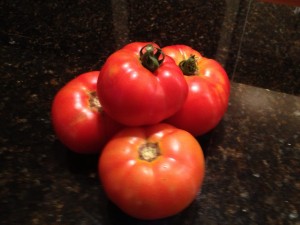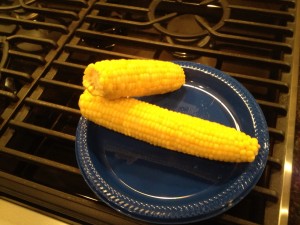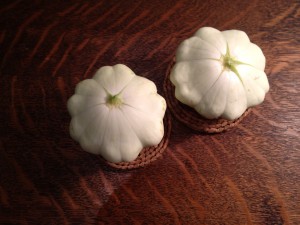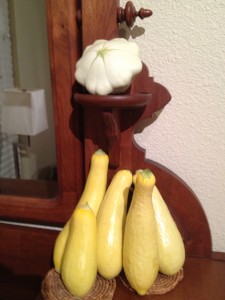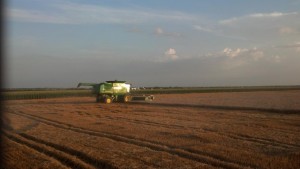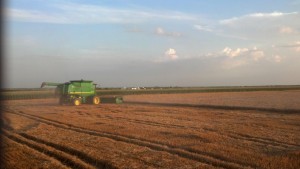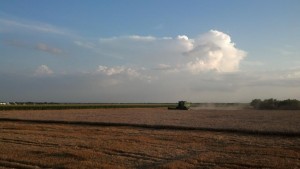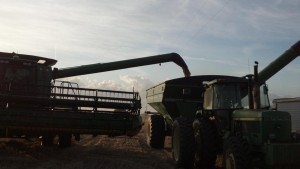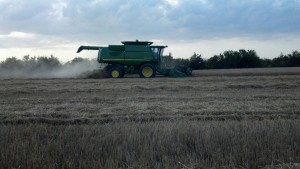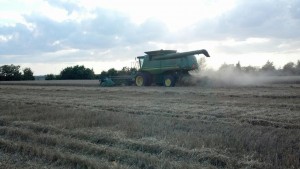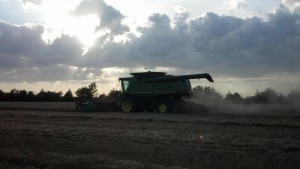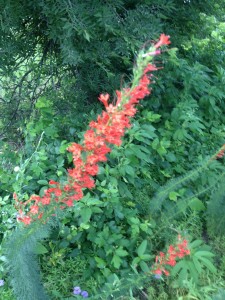All the world’s a garden, and all the vegetables are its players.
And when the tomatoes, corn and squash have ripened, there are only smiling faces.
Yesterday we got the call from relatives headed back home on the freeway. They were stalled in traffic. We lamented and told them it is often the way returning to Dallas on a Sunday evening. Then, they told us they had produce to share from MeMaw’s garden and were returning from Uncle Joe’s farm. We rushed to the computer and mapped a super-secret back-way for them to escape from DFW. They were at the house with the precious cargo in fifteen minutes.
A fresh home-grown tomato has no peer in the grocery aisle. These were “Heat Waves,” a variety that grows to 95 degrees Fahrenheit (35 degrees Celsius) in the sweltering Texas summer. And, these we did eat, sliced with a touch of salt. The luscious red apples were so sweet the salt was a convention to the style of Texas. I needed nothing more than the succulent globules. Technically speaking, the tomato is a fruit. In Iowa as a child, we sprinkled sugar, but these rounded globes had their own built-in sugar and needed no assist. Here are the ones we saved for another day.
Next were the ears of corn, boiled in water and served with butter, salt and pepper. Uncle Joe tells me this variety is called “Kandy Korn.” It is a particularly sweet and easy-to-eat treat. For this mutant relative of field corn, the first ears of summer are the true harbinger of a successful garden. I love all produced from the back-yard rows, but when “Corn’s in the garden/All’s right with the world” (forgive me, Robert Browning), and we know the summer play and poetry has served us well and our stomachs rest at peace when the corn is on the plate and oh so good. We couldn’t eat them all, and here are the two remaining ears — which can be quickly micro-waved to recall and finish the pleasant peasant repast.
This is Uncle Joe’s favorite squash. It is called “patty-pan,” and you can see they look like flying saucers. Joe likes his patty-pan breaded and fried, with just a tad of hot spices in the crispy coating. So be prepared, it is, as it appears, out of this world.
Last are the plentiful yellow straightneck (to distinguish them from their relative the yellow crookneck) squash. As you may notice, some of the straight look a bit crooked. Down at the farm, they are all yellow squash. The yellow squash are excitement in the garden where they lie hidden beneath and behind all the green-vined foliage waiting for a gatherer to yell, “I found one!” Great fun is that and great eating in a variety of stewed, sliced, diced, fried and stuffed ways.
There you have the latest news-you-can-eat from Uncle Joe at the farm. One final shot for your viewing enjoyment: Here we find a platoon of yellow squash observing a patty-pan flying low overhead. Don’t worry, he won’t get away. He may think he’s unidentified, but that flight path leads right to the kitchen.
As they say on the farm: “Out of the saucer, and into the frying pan.”
Grandpa Jim

